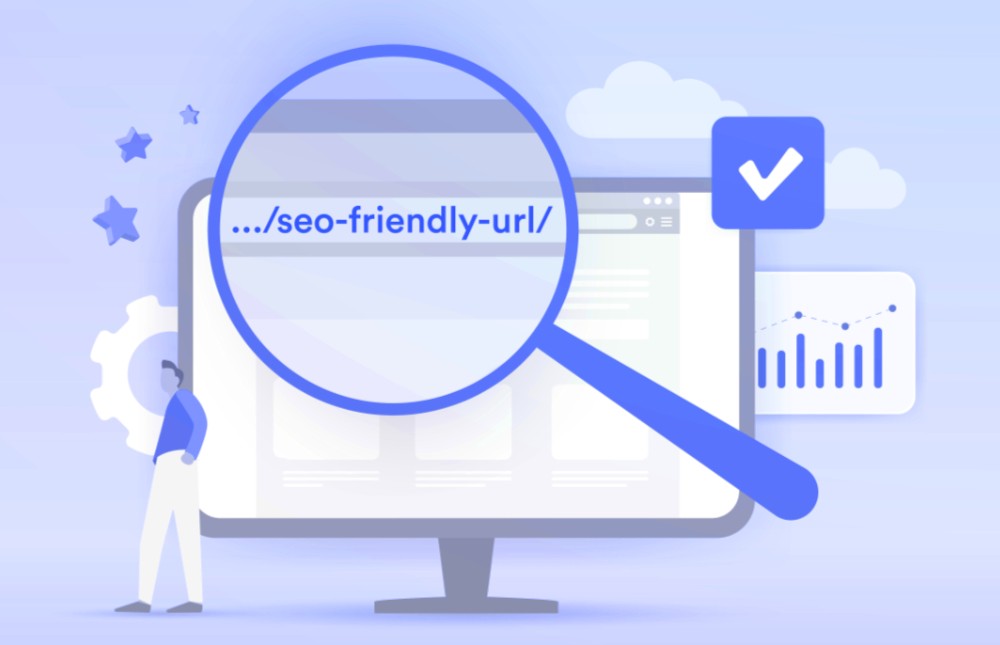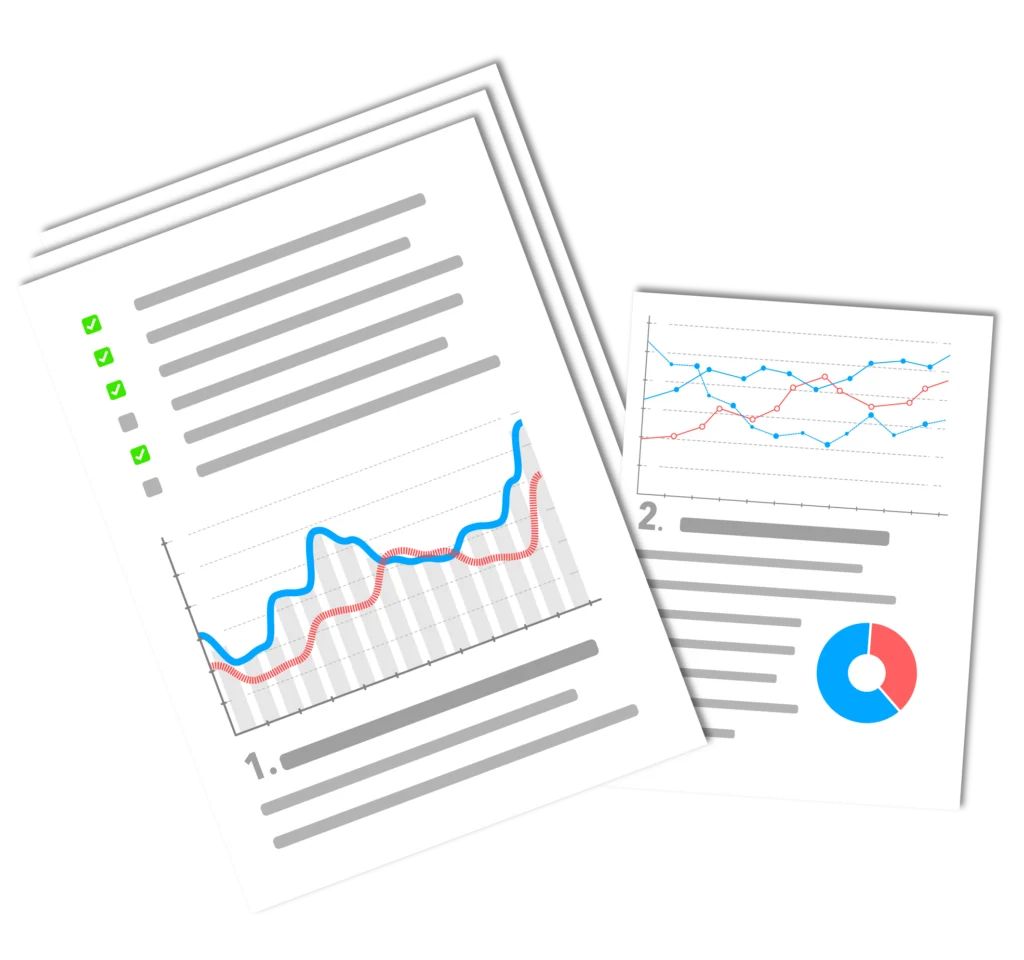A Uniform Resource Locator (short URL) is the web address we want to include in a Browser to access a web page. Web URLs are also called links. Many people will click on a link to go directly to your website. So does it matter how the URL der Seite für eine perfekte SEO-URL-structure is? Yes, that's it...

What exactly is the (SEO) URL structure?
A URL is an address on the Internet. It consists of a protocol, a domain name and a path. The protocol specifies how the Browser receives the information via this page
- either http:// or
- https:// (The "s" stands for safe).
The Subdomain is the part of the domain that comes before the main "root" domain. You can set up multiple subdomains, but they are essentially different websites, so you shouldn't have many subdomains if you don't really need them. Subdomains are created to organize the content of your website. You can use any string of characters for a Subdomain not just "www."!
The Domain name is the unique address where a website can be found.
The top-level domain (TLD) is for example com, org, net, and there are many more!
The path refers to the exact location of a page, post, or file.
SEO URL structure can be different
Not all websites use the same URL-structure. And that is all right.
The URL-Struktur einer Website hängt von den individuellen Bedürfnissen der Website ab.
For example, the URL einer internationalen Website wahrscheinlich für mehrere Sprachen oder Standorte strukturiert sein. Die URL-The structure of a blog site may be different from that of an eCommerce or membership site. And the URL-The structure of a government website is likely to be different from that of a social network.
Depending on the purpose of the website, the SEOURL-Struktur, aber unabhängig davon, welche Struktur gewählt wird, gelten immer noch grundlegende Best Practices, um eine korrekte URL-structure.

The secure protocol "https://" is nowadays standard for most common Browser. Older certificates such as "http://" are sometimes even rejected or warned against during transactions and data exchange.
Why is the URL structure important for SEO?
URLs are the organization of your website's content. They are the link between your content and a user. The URL-Struktur ist primär aus diesen beiden Gründen wichtig:
1. user experience - simple, speaking URLs
A good user experience is the most important factor when it comes to SEO.
Improve your user experience by creating a logical SEOURL-Structure with page hierarchies. Intuitively organized content makes your website easier for people to navigate.
You want your website to be as easy to navigate as possible.bern so that visitors can navigate the website safely and are not confused.
Not only should you structure your URLs logically, but also SEO friendly URLs use. URLs that are simple and easy to read and contain keywords that describe the content of a web page are SEO-friendly.
Wenn du zum Beispiel nach Informationen über Pfannkuchen suchst, hilft dir eine URL like Pancake when deciding to click on this link.
A URL like https://www.beispiel.de/index.php?id_wca=22147&clcp29sap does not clearly explain what the landing page is about and is not friendly. Simple and Speaking URLs offer the best user experience. Optimize URLs with descriptive keywords that give a clear understanding of what the page is about.
You should use your SEO-URL-Structures optimize, because that helps search engines deliver relevant results to searchers, and searchers know exactly what they're looking at when they click the link.
2. the PageRank from Google
Good SEOURL-structure show Google what the different pages of the website are about and how they relate to each other. Also the internal linking (links to pages within your website) helps.
Wenn du deine URLs für Menschen optimierst, erleichterst du es auch den Suchmaschinen-Bots, deine Website zu crawlen und zu indexieren, um den Suchenden relevante Inhalte zu liefern. URLs sind ein Rankingfaktor für Google und andere Suchmaschinen.
This means that optimized SEO-URL-Structure the Google PageRank (PR) promote. PageRank is the way Google evaluates the value of a website and its Relevance for a search query.
Root domains generally have the highest PageRank and even though the use of keywords on your root pages is your Ranking you should not rely solely on the URL-Schlüsselwörter verlassen, um zu ranken. Vermeide es, die URLs mit jedem Schlüsselwort vollzustopfen und füge nur das ein, was nützlich ist.
SEO-friendly URLs increase the likelihood that the link will be clicked, and this can also improve your PageRank increase
After your website has gone online and every time you URL einer Seite änderst, musst du deine Sitemap in der Google Search Console (erneut) einreichen. Du willst deine Sitemap übermitteln, damit die Suchmaschinen deine Seiten sofort crawlen und indexieren, damit die SERPS (Search Engine Results Pages) deine Website auf dem neuesten Stand halten.
Your twelve SEO best practices for good & catchy URLs
1. follow smart & catchy URL structures
The URL-Hierarchy must definitely be established before you start building your website.
Es gibt keine feste Regel für die absolut beste SEO-URL-Struktur. Und URLs können je nach Zweck der Website unterschiedlich sein.
But a URL structure that simply, logical and is easy to remember und die Bedeutung der verwendeten Wörter vermittelt, gilt als die beste. Gestalte deine SEO-URL-Struktur intuitiv, damit Nutzer und Suchmaschinen die Verbindungen zwischen den verschiedenen Seiten deiner Website schnell und einfach verstehen können. Sobald deine SEO-URL-structure, it is fairly easy to find the correct URL-Schlüsselwörter für jede Seite auszuwählen.
2. use a secure HTTPS protocol
HTTPS is the secure version of the HTTP protocol. A Secure Sockets Layer (SSL) encrypts the communication between your Browser and a website so that hackers can intercept the data but cannot read it.
HTTPS makes your website more credible because it instills trust in users - they feel safer providing their credit card details, address and phone number.
This seems simple, but only just under 70 % of all websites in Europe currently redirect to HTTPS.
I don't know about you, but I personally NEVER buy from a website that isn't secure. If your website only works over HTTP, you're probably losing potential customers from tech-savvy users.
HTTPS is also a GoogleRanking-signal and prefers websites with SSL. In the ChromeBrowser zeigt das Vorhängeschloss-Symbol in der URL-Leiste an, ob die Website eine sichere Verbindung hat oder nicht. Klicke auf das Symbol, um mehr über die Verbindung zu erfahren.
3. hiding the prefix "www" (prefix)
The www prefix used to be used to avoid confusion because it was very obvious that it meant a website domain. Nowadays, however, it is no longer necessary to specify it.
And if you do insert it, it looks antiquated, takes longer and takes up more space in the address bar. Many Browser hide WWW and HTTPS:// in the address bar because this information is not so important for most users as it is marked with the security lock symbol. If you want to see them, just double-click in the address bar, they are still there.
Hide the www prefix to make your domain "naked" and cleaner. Redirect the www version to the naked domain.
4. edit the URL of the page so that it is relevant
When you publish a page on your website, it should have a clear purpose. Don't use randomly generated numbers that are confusing and don't Relevance have
Adapt the URLs of your website so that they describe the content of the page. This improves the user experience and can increase click-through rates.
5. keep it short and simple
Most URLs automatically use the title of the page or post as the defaultURL, aber manchmal kann der Titel eine unnötig lange Zeichenfolge für die URL sein. Je kürzer die URL, desto besser – kurze URLs ranken in der Regel auch besser.
6. use meaningful keywords
Verwende 1-2 relevante Schlüsselwörter in deiner URL und sage Google, wofür die Seite in den Suchergebnissen auftauchen soll. Fülle deine URL nicht mit mehr Schlüsselwörtern, denn das kann wie Spam wirken. Verwende ein Keywordwhich appears in the title of the page or post.
In addition to the URL solltest du diese Schlüsselwörter auch in die Meta description of your page, as Google displays these words in bold in the search results, making your page stand out better.
7. use hyphens to separate words
URLs do not use spaces to separate words. Do not use underscores either.
SEO best practices use hyphens between words because they show Google and users where the breaks are between words, and because they're so much easier to read than a jumbled word.
8. eliminate stop words
Stoppwörter (die, und, oder, von, ein, eine, zu, für, etc.) müssen in deiner URL nicht vorkommen. Entferne diese Wörter aus deiner URL, um sie kürzer und besser lesbar zu machen.
9. ALWAYS use lowercase letters
URLs are case-sensitive according to the domain name. This means that WolfOfSEO.com you still to https://wolf-of-seo.de/ leads, but https://wolf-of-seo.de/Blog/ takes you (in older browsers, newer ones test and correct automatically) to a 404 page instead of our contact page
Nevertheless, always use lowercase letters for your URLs and if you have used uppercase letters, update your links and redirect them to the new ones.
Squarespace automatically uses lowercase letters. So if this is your website platform, you don't need to worry about capitalization.
10. redirect old URLs - 301 redirects
Es ist wahrscheinlich, dass du im Laufe der Zeit Änderungen an deiner Website vornimmst und dich für eine SEO-URL-Struktur entscheidest, die du später ändern möchtest, um die Benutzerfreundlichkeit zu verbessern. In diesem Fall ist es empfehlenswert, permanente Weiterleitungen einzurichten.
Redirects ensure that there are no broken links for humans and bots.
Every time you make a URL bearbeitest oder änderst, fügst du eine 301-Weiterleitung hinzu, damit jemand, der auf die alte URL clicks, automatically to the new URL is redirected and does not see a broken 404 error page.
Vermeide jedoch zu viele Weiterleitungen, denn sie können deine Seite verlangsamen. Ein oder zwei Weiterleitungen sind in Ordnung, aber am besten ist es, die Seite ohne Weiterleitungsschleifen zugänglich zu machen. Deshalb ist es so wichtig, dass du zu Beginn deiner Website eine gute SEO-URL-Struktur auswählst, um Weiterleitungen zu vermeiden!
11. the removal of data from blog posts
If you change the date from the URL eines Blogbeitrags entfernst, bleiben die Inhalte für Suchende relevant, denn die Leute wollen immer die aktuellsten Inhalte. URLs ohne Datum können die Klickraten in den Suchmaschinen verbessern und dazu beitragen, dass Inhalte jahrelang im Ranking remain.
As long as the post doesn't refer to a specific event or day, there's no reason to format your posts with the date. If you do, it can even lead to a drop in click-through rate, as people are less likely to want to read an outdated post from 2013 than a current source.
So kannst du leistungsstarke Beiträge mit neuen Inhalten aktualisieren und den Beitrag dann mit einem neuen Datum erneut veröffentlichen, ohne die alte URL umleiten zu müssen. Alte Inhalte zu aktualisieren und neu zu veröffentlichen ist eine starke SEO-Strategie.
Aber insgesamt ist es am besten, das Datum zu entfernen, um ein gutes Nutzererlebnis zu gewährleisten! Wenn du das Datum weglässt, ist die URL für die Nutzer einfacher zu navigieren.
For example with the date (it is always a few characters longer):
https://www.beispiel.com/blog/ws/2022/05/04/internal-linking
- with the full date inside.
https://www.beispiel/blog/internal-linking – ohne das Datum und eine vereinfachte URL mit Schlüsselwörtern, die immer noch erklärt, worum es in dem Beitrag geht, macht das lesen und auslesen für Google um einiges einfacher!
SEO-friendly URLs - a small conclusion at the end
URLs sind die Bausteine deiner Website und können, wenn sie optimiert sind, dazu beitragen, die Besucherzahlen deiner Website zu erhöhen. Saubere SEO-URL-Strukturen funktionieren besser in der Suche, wirken vertrauenswürdiger und lassen sich leichter teilen.
I hope these quick best practices help you with your website URLs. Let me know if you have any questions, and drop me a line in the comments!


